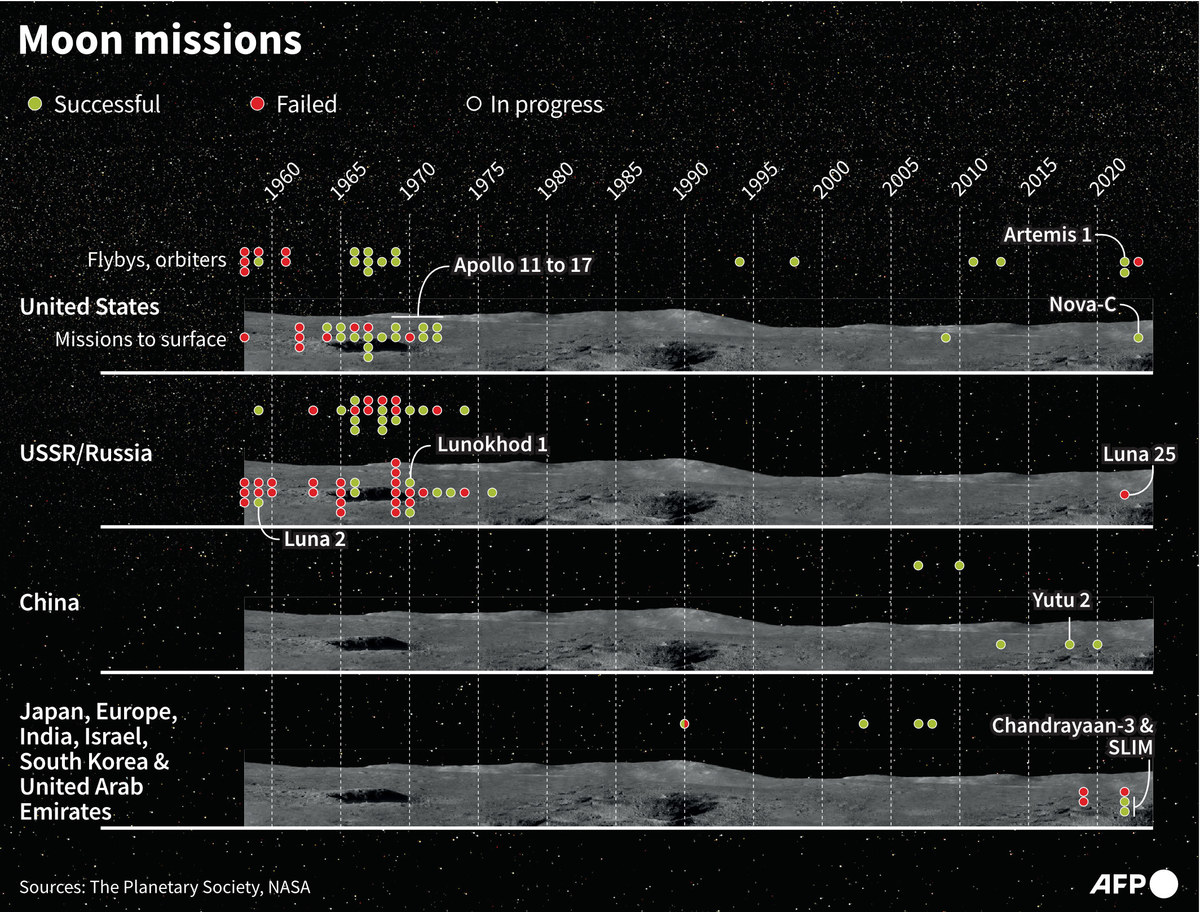WASHINGTON: A lucky Japanese astronaut will become the first non-American to set foot on the Moon during one of NASA’s upcoming Artemis missions, US President Joe Biden announced Wednesday.
The offer to Japan — an opportunity many nations have long dreamed of — came as part of Prime Minister Fumio Kishida’s state visit, and as Washington seeks to strengthen ties with its key Asian ally.
“Two Japanese astronauts will join future American missions, and one will become the first non-American ever to land on the Moon,” Biden said in a press conference with Kishida.
Kishida hailed the announcement as a “huge achievement” and announced that Japan would in return supply a rover for the program.
NASA’s Artemis program seeks to return humans to the Moon for the first time in over 50 years, and to build a sustained lunar presence ahead of potential missions to Mars.

CEO of Venturi Astrolabe Jaret Matthews speaks in front of a mock-up of the the LTV (Lunar Terrain Vehicle) is shown on a screen during a news conference at the Johnson Space Center in Houston, Texas, on April 3, 2024, to announce the new vehicle which will help Artemis astronauts explore the moon on future missions. (AFP)
Between 1969 and 1972, the US Apollo program saw 12 Americans — all white men — walk on the Moon.
NASA previously announced that the Artemis program would see the first woman and the first person of color land on the Moon.
“America will no longer walk on the Moon alone,” NASA chief Bill Nelson said in a video published on social media.
“Diplomacy is good for discovery. And discovery is good for diplomacy,” he added.
The first mission to take astronauts to the lunar surface, Artemis 3, is planned for 2026. China meanwhile has said it seeks to put humans on the Moon by 2030.
Tokyo and Washington have worked together in the space sector for years, notably collaborating on operations at the International Space Station (ISS).
And this year, Japan became the fifth country to succeed in landing a spacecraft on the Moon, with its SLIM craft touching down in January.
In a joint media release, the United States and Japan clarified that a Japanese national would land on the Moon “assuming important benchmarks are achieved,” without clarifying further.

History of Moon missions, by country and by type of mission. (AFP)
The lunar rover provided by Japan in return will be pressurized, meaning astronauts can travel farther and work for longer periods on the lunar surface, according to the statement.
It added that the pressurized rover will accommodate two astronauts in the “mobile habitat and laboratory” for up to 30 days as they explore the area near the lunar South Pole.
NASA currently plans to use the rover on the future Artemis 7 mission, followed by subsequent missions over a 10-year lifespan.
The European Space Agency (ESA) has three seats reserved for future Artemis missions in exchange for technological contributions to the program.
However, it is still unclear whether European astronauts will have the chance to step foot on the Moon or just fly around it.
Daniel Neuenschwander, director of human and robotic exploration at the ESA, said these details of the agreement with NASA were still “subject to further discussions.”
Neuenschwander added in a phone interview with AFP on Wednesday that he could “perfectly understand” the cooperation between the United States and Japan, acknowledging “geostrategic” motives for the agreement.
The Artemis space program was inaugurated in 2022 with Artemis 1, which successfully flew an uncrewed vessel around the Moon.
Artemis 2 is planned for 2025 and will send four astronauts around the Moon without landing. The crew will consist of three Americans and a Canadian, who are currently in training.
The first crewed landing on the Moon will be Artemis 3, currently scheduled for 2026. NASA has not yet announced who will take part in the mission.



























